Comments / Questions (35)
![]() Izabela wrote:
Izabela wrote:
Hallo, der Pullover ist wunderschön. Allerdings fehlen in der Anleitung die Diagramme A1 und A2. Oder übersehe ich etwas? Wären Sie bitte so freundlich , mir einen Tipp zu geben? Danke.
26.05.2025 - 07:39Izabela answered:
Désolée! In der Eile und Aufregung habe ich die Diagramme A1 und A2 übersehen. Alles gefunden! Tut mir leid. 😊
26.05.2025 - 07:42
![]() Civario Marie wrote:
Civario Marie wrote:
Où puis-je avoir les explications de ce pull réalisé avec kid silk. Drops 212 22 Merci
04.05.2025 - 15:42DROPS Design answered:
Bonjour Mme Civario, vous trouverez les explications de ce pull ici. Bon tricot!
05.05.2025 - 08:12
![]() Angélique Joubert wrote:
Angélique Joubert wrote:
Bonjour, il est noté aiguilles n°4 pour les côtes et lorsqu'on commence le pull, il est noté aiguilles 5.5... est-ce une erreur ? j'ai fait avec les 5.5 mais cela ne me semble pas "top"... :-(
04.11.2024 - 21:36DROPS Design answered:
Bonjour Mme Joubert, on utilise l'aiguille circulaire pour les côtes du col; le bas du pull, l'empiècement et les manches se tricotent avec l'aiguille circulaire 5,5 - ou la taille nécessaire pour obtenir l'échantillon de 16 mailles x 20 rangs jersey avec 1 fil de chaque qualité = 10 x 10 cm. Bon tricot!
05.11.2024 - 09:44
![]() Nancy Norris wrote:
Nancy Norris wrote:
I started this pattern about 18 months ago and am stuck. I do not understand how to begin with the yoke after adding the sleeves to the needles with the body. Is the "transition" between the body and sleeves the bound-off portion? Then, I don't understand the phrase "begin round after 10 stitiches, ie, after 5 stitiches after transition.
28.09.2024 - 03:02DROPS Design answered:
Dear Nancy, in the body you had cast off 7 stitches on each side. When you move all stitches to the needle, the sleeve stitches will be placed in the space where those 7 stitches were cast off. The transition between the sleeve and body is the "space" between the stitches of a body section and the stitches of a sleeve. In the pattern, you will have the beginning and end of every sleeve/body sections as 5 knit stitches, so the transition will look as 10 knit stitches. And you will start the round after these 10 knit stitches, specifically the connection between the right sleeve and the back piece. Happy knitting!
29.09.2024 - 20:42
![]() Boel Svensson wrote:
Boel Svensson wrote:
Hej! Ska sticka den här tröjan. I mönstret på diagramförklaring finns en symbol för " lyft en maska som om den skulle stickas rät o.s.v." men i diagrammen finns det ingen sån maska, bara " två räta tillsammans". Dvs, ska diagram A1 och A2 vara likadana? Har jag missat nånting? Skulle vara jättesnällt om ni kunde hjälpa mig. Mvh. Boel.
24.08.2024 - 11:49DROPS Design answered:
Hei Boel. Ser ut som det 5. diagramikonet ikke skulle ha vært med. Takk for at du gjorde oss oppmerksom på dette. mvh DROPS Design
26.08.2024 - 13:34
![]() Boel Svensson wrote:
Boel Svensson wrote:
Hej! Ska sticka den här tröjan. I mönstret på diagramförklaring finns en symbol för " lyft en maska som om den skulle stickas rät o.s.v." men i diagrammen finns det ingen sån maska, bara " två räta tillsammans". Har jag missat nånting? Skulle vara jättesnällt om ni kunde hjälpa mig. Mvh. Boel.
18.08.2024 - 10:33
![]() Nanny wrote:
Nanny wrote:
Dag, bij het telpatroon merkte ik een foutje: Leeg vierkantje = recht Vierkantje met - erin = recht Dit laatste moet averecht zijn. Prachtige trui.
27.10.2022 - 16:42
![]() Grillaert Jenny wrote:
Grillaert Jenny wrote:
Bij de naalden die nodig zijn voor dit model, staat rondbreinaald nr 4 voor de boordsteek, maar toch staat bij de uitleg voor het patroon : opzetten met rondbreinaald 5,5. Graag had ik geweten met welke naald nu echt moet opgezet worden. Met dank
02.04.2022 - 02:49DROPS Design answered:
Dag Jenny,
De dunnere naald wordt alleen gebruikt bij de boordsteek langs de halslijn. Voor de boord aan het begin van de mouwen en het lijf wordt de dikkere naald gebruikt om te voorkomen dat de boordsteek samentrekt. Als je toch wilt dat de boord een beetje samentrekt, kun je natuurlijk ook daar een dunnere naald gebruiken.
04.04.2022 - 11:44
![]() Kirsi Hemanus wrote:
Kirsi Hemanus wrote:
Please, the pattern (drawing) has disappeared, can you add it or send to me via email.
08.10.2021 - 15:37DROPS Design answered:
Dear Kirsi, that was caused by a technical problem, that is solved since. You should see the diagrams now. Happy Stitching!
08.10.2021 - 17:39
![]() Joan Lægg Willumsen wrote:
Joan Lægg Willumsen wrote:
Hej - jeg vil så gerne igang med denne bluse, men jeg kan ikke se diagrambeskrivelserne når jeg henter opskriften på nettet. vh Joan
05.10.2021 - 15:13DROPS Design answered:
Hej Joan. Diagrammen/diagrambeskrivningar finns längst ner på opskriften. prova att uppdatera sidan (ev. testa en annan webläsare) om du inte kan se dem. Mvh DROPS Design
06.10.2021 - 09:29
Spinning Ribbons#spinningribbonssweater |
||||||||||||||||||||||
 |
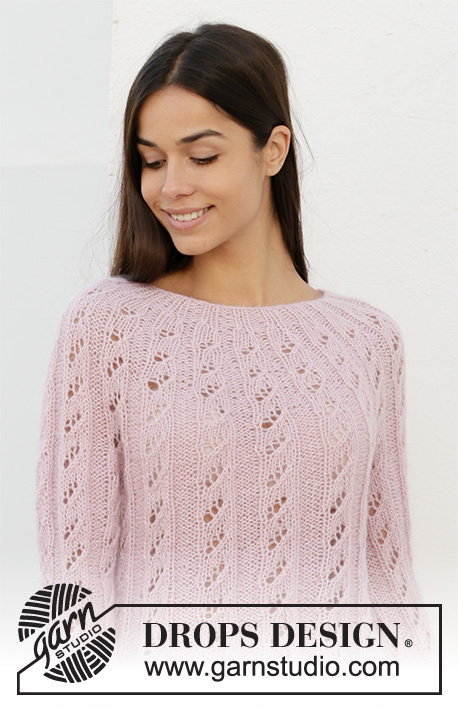 |
|||||||||||||||||||||
Knitted jumper with round yoke in DROPS Alpaca and DROPS Kid-Silk. Piece is knitted with rib and lace pattern. Size XS–XXL.
DROPS 212-22 |
||||||||||||||||||||||
|
---------------------------------------------------------- EXPLANATION FOR THE PATTERN: ---------------------------------------------------------- PATTERN: See diagrams A.1 to A.5. INCREASE TIP-1 (applies to sleeve): Increase 1 stitch by making 1 yarn over. On next round purl yarn over twisted to avoid holes. At first increase, increase after the first purl stitch in every purl section. On second increase, increase before the last purl stitch in every purl section. On third increase, increase after the first purl stitch in every purl section, etc. INCREASE TIP-2: Increase in every knit section as follows: Knit 1, make 1 yarn over, knit the remaining 4 stitches = 6 stitches. DECREASE TIP: Work until 3 stitches remain before marker thread, purl 3 together (= 2 stitches decreased), marker thread is here, purl 3 together (= 2 stitches decreased). Repeat at the other marker thread. ---------------------------------------------------------- START THE PIECE HERE: ---------------------------------------------------------- JUMPER - SHORT OVERVIEW OF THE PIECE: Work body in the round on circular needle. Work sleeves in the round on double pointed needles/a short circular needle. Then slip sleeves on to same circular needle as body before working yoke in the round on circular needle. BODY: Cast on 132-154-176-198 stitches on circular needle size 5.5 mm with 1 strand Alpaca and 1 strand Kid-Silk (= 2 strands). Work rib (= purl 5/knit 6) in the round. When piece measures 3 cm, work pattern as follows: * Purl 5, A.1 over the next 6 stitches *, work from *-* in the round. REMEMBER THE KNITTING TENSION! Continue until piece measures 27-29-28-31 cm – adjust to finish after next to last round in A.1. Work next round (i.e. last round in A.1) as follows: Cast off the first 6 stitches (= purl 5, and knit 1), work the next 59-70-81-92 stitches (= front piece), cast off the next 7 stitches (= knit 1, purl 5, knit 1), work the next 59-70-81-92 stitches (= back piece), cast off last stitch (= knit 1). Cut the yarn. Put piece aside and work the sleeves. SLEEVES: Cast on 45-45-54-54 stitches on double pointed needles size 5.5 mm with 1 strand Alpaca and 1 strand Kid-Silk (= 2 strands). Work rib (purl 4/knit 5) in the round for 3 cm. Now work A.2 over the 5 knit stitches and continue with purl over purl. AT THE SAME TIME decrease and increase as follows: When piece measures 6 cm, decrease all 4 purl stitches to 3 purl stitches by purling the first 2 stitches in purl sections together = 40-40-48-48 stitches. When piece measures 12 cm, decrease all 3 purl stitches to 2 purl stitches by purling the last 2 stitches in purl sections together = 35-35-42-42 stitches. When piece measures 18-18-17-16 cm, increase all 2 purl stitches to 3 purl stitches - read INCREASE TIP-1 = 40-40-48-48 stitches. When piece measures 24-24-23-22 cm, increase all 3 purl stitches to 4 purl stitches = 45-45-54-54 stitches. When piece measures 29-29-28-27 cm, adjust so that one whole repetition of A.2 has been worked vertically, increase all 5 knit stitches to 6 knit stitches - read INCREASE TIP-2 = 50-50-60-60 stitches. Then work A.1 over every repetition of A.2. When piece measures 35-35-33-33 cm, increase all 4 purl stitches to 5 purl stitches = 55-55-66-66 stitches. Continue in the round with A.1 and 5 purl stitches in every purl stitch until sleeve measures 39-41-38-38 cm - adjust to finish after next to last round in A.1. Work next round (i.e. last round in A.1) as follows: Cast off the first 6 stitches (= 5 purl stitches, 1 knit stitch), work pattern as before until 1 stitch remain, cast off last stitch (= 1 knit stitch) = 48-48-59-59 stitches remain on needle. Cut the yarn. Put piece aside and knit another sleeve the same way. YOKE: Slip sleeves on to same circular needle as body where armholes were cast off in each side= 214-236-280-302 stitches. In every transition between body and sleeves there are now 10 knit stitches. Begin round after 10 knit stitches, i.e. after 5 knit stitches after transition between right sleeve and back piece. Work pattern A.3 over A.1, A.4 over the 5 purl stitches and A.5 over the 10 knit stitches in transition between body and sleeves. When A.5 has been worked vertically (8 rounds on yoke have been worked), 4 stitches have been decrease in every repetition A.5 (= 16 stitches decreased) = 198-220-264-286 stitches. Now work in the different sizes as follows: Size XS and S/M: Continue with A.3 and A.4 as before, over the 6 stitches in A.5 work A.3 (make sure to begin on same round in all repetitions on round). When diagrams have been worked vertically, there are 72-80 stitches on round. Switch to circular needle size 4 mm. Continue with rib = knit 2/purl 2 for 3 cm. Cast off stitches with knit over knit and purl over purl. Cut and fasten the yarn. Jumper measures approx. 52-54 cm from shoulder and down. Size L/XL, XXL: Repeat the first 8 rounds in A.3 and A.4 and over A.5 work A.3 (make sure to begin on same round in all repetitions on round). When the 8 rounds in diagrams have been worked 2-2 times in total vertically (i.e. 16 rounds have been worked in total on yoke), work the remaining rounds in diagrams. When diagrams have been worked vertically, there are 96-104 stitches on round. Now insert a marker thread in the middle of the 2 knit stitches mid on top of shoulder in each side. On next round work knit over knit and purl over purl, and on each side of marker thread on each shoulder decrease 2 stitches - read DECREASE TIP = 88-96 stitches. Switch to circular needle size 4 mm. Continue with rib = knit 2/purl 2 for 3 cm. Cast off stitches with knit over knit and purl over purl. Cut and fasten the yarn. Jumper measures approx. 57-60 cm from shoulder and down. ASSEMBLY: Sew the openings under the sleeves. |
||||||||||||||||||||||
Diagram explanations |
||||||||||||||||||||||
|
||||||||||||||||||||||

|
||||||||||||||||||||||
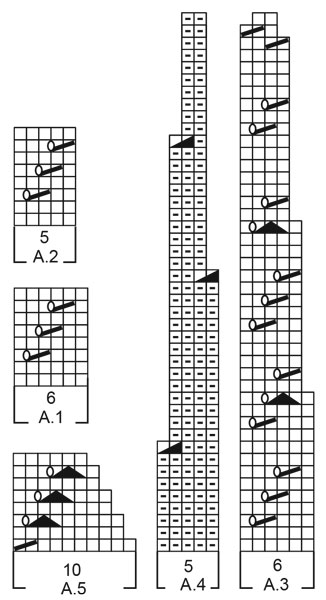
|
||||||||||||||||||||||
Have you finished this pattern?Tag your pictures with #dropspattern #spinningribbonssweater or submit them to the #dropsfan gallery. Do you need help with this pattern?You'll find 27 tutorial videos, a Comments/Questions area and more by visiting the pattern on garnstudio.com. © 1982-2025 DROPS Design A/S. We reserve all rights. This document, including all its sub-sections, has copyrights. Read more about what you can do with our patterns at the bottom of each pattern on our site. |
||||||||||||||||||||||







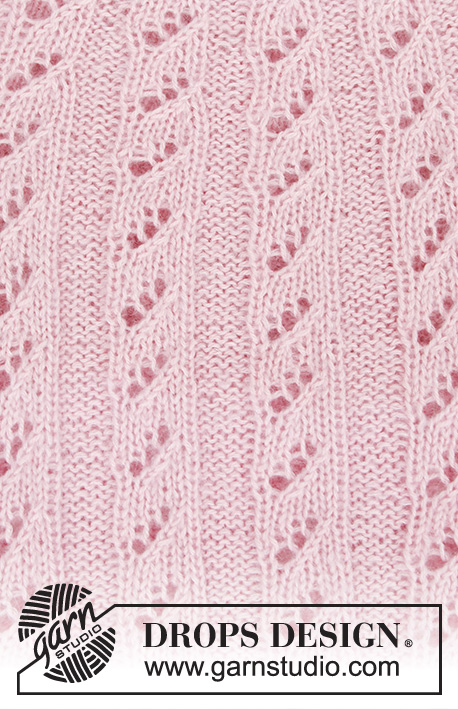

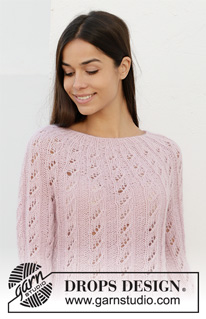






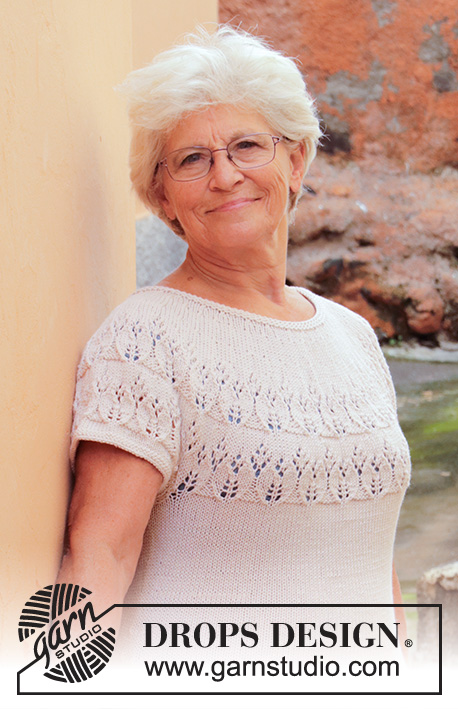






















































Post a comment to pattern DROPS 212-22
We would love to hear what you have to say about this pattern!
If you want to leave a question, please make sure you select the correct category in the form below, to speed up the answering process. Required fields are marked *.